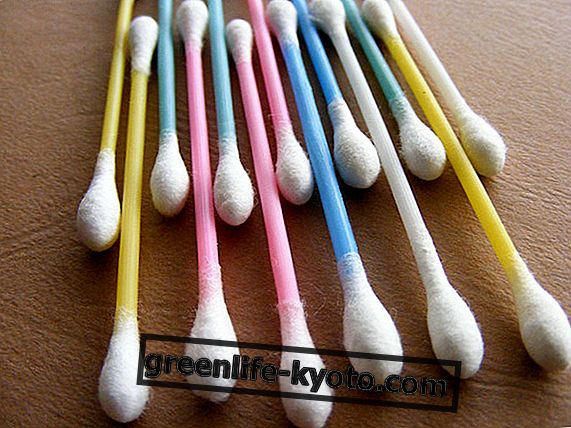
What is Manitoba flour
The flour sold with the name of manitoba is precisely the flour obtained from a cereal grown in Canada and in North America . This cereal is an ancient grain variety called Triticum Aestivum that grows precisely in the cold Canadian and North American lands.
This wheat variety is essentially the same as the classic wheat, except that it contains a high percentage of protein part up to a composition of 18% in proteins.
This massive protein presence makes the grain of wheat very resistant to cold, which in so cold lands allows the seed to fall to the ground after the death of the mother plant.
After the winter, thanks to the presence of proteins that have protected it from low temperatures and from frost, the seed is able to sprout on the plant.
Currently we find that all flours with high protein content are sold as Manitoba flours called "strong flours" even if derived from other cereals.
However, the real manitoba flour comes from the grinding of this grain grown in the Canadian localities by the same name Manitoba. Manitoba flour is also known as "American flour" .
Characteristics of Manitoba flour
Manitoba flour contains a lot of proteins and therefore it is very rich in gluten that the specific name for one of the wheat proteins.
A flour rich in glutein and gliadin allows the formation of a dense network and the formation of very resistant bubbles which hold the air during leavening with the result of a soft and perfectly swollen dough .
This effect is highly sought after for the production of long leavened bakery products, since normal flours deflate after some time and are unable to continue leavening.
In technical jargon we speak of the bread-making index identified with the letter W which serves to classify precisely the yield capacity in flour leavening . Manitoba flour has a W of 360 while 00 flour is half with 200 W.
Furthermore, Manitoba flour has another excellent characteristic which consists in absorbing a lot of water up to 80% of its weight and this becomes another excellent property for the production and preparation of oven recipes.
Finally, even if a strong flour is defined, it has a composition almost equivalent to the normal wheat flour 00 .
Taking 100 grams of Manitoba flour we will have 71 grams of carbohydrates, 1 gram of fat and 14 grams of protein with 343 kilocalories. Wheat flour 00 is practically the same while if we take a whole wheat flour we will have 319 kilocalories on 100 grams.
When using manitoba flour
Manitoba flour is mainly used in industrial baking for the preparation of both sweet and savory long leavening recipes.
Even at home we can experiment recipes with Manitoba flour that we can buy in any supermarket even if it is always essential to read the product label to know its origin.
The choice of origin of organic farming will always guarantee greater quality and greater control over the product.
We find manitoba flour in the recipes of festive desserts such as pandoro, panettone and ciambelloni. These products need long leavening that even exceed 24 hours. Manitoba flour is also indicated for preparing savory recipes such as pizza, bread, focaccia and pies, but also other sweet recipes such as bignè, babà, donuts and croissants.
Finally the manitoba flour being rich in gluten is used to produce the seitan. This is a food widely used in vegan and vegetarian nutrition that is cholesterol-free and low in fat but rich in protein . It is usually used as a meat substitute in vegetable and vegan diets.
Why pay attention to the use of Manitoba flour
Manitoba flour contains a lot of gluten which for some people is harmful to one's health. Whoever suffers from celiac disease cannot absolutely use this Manitoba flour which would become a toxic element within their body.
Furthermore, many people have become sensitive to this wheat protein and therefore must avoid eating foods that contain gluten. Those who suffer from food intolerances often discover their sensitivity to gluten and therefore manitoba flour cannot be used by these people.
For other people we recommend the moderate use of manitoba flour due to the widespread use of wheat in food products. Modern food in Italy too often uses only wheat flour and therefore subjects the population to continuous contact with gluten.
Much more suitable and advisable is to choose different cereal flours and vary the recipes as much as possible. In practice it is good to alternate days when we eat gluten with days when we use gluten-free products.
Another observation to make is related to the refining of flour . In fact, on a nutritional level, the more refined a flour the more it loses precious nutrients that are essential for our health.
As the use of 00 flour is not recommended because it is too refined, so the use of manitoba flour must be moderated since the refining process is practically identical.
The previous suggestion to alternate the flours preferring those of whole grains and then diversifying the choice of the grains becomes valid again.
Finally the typical recipes with manitoba flour are often rich in saturated fats, many sugars and cholesterol as for example in panettone and pandoro.
In this case it is certainly not manitoba flour that causes problems but it is these other ingredients that cannot be included in the daily diet . Obviously during the holidays they will be a real treat but in the daily diet they should be avoided.













